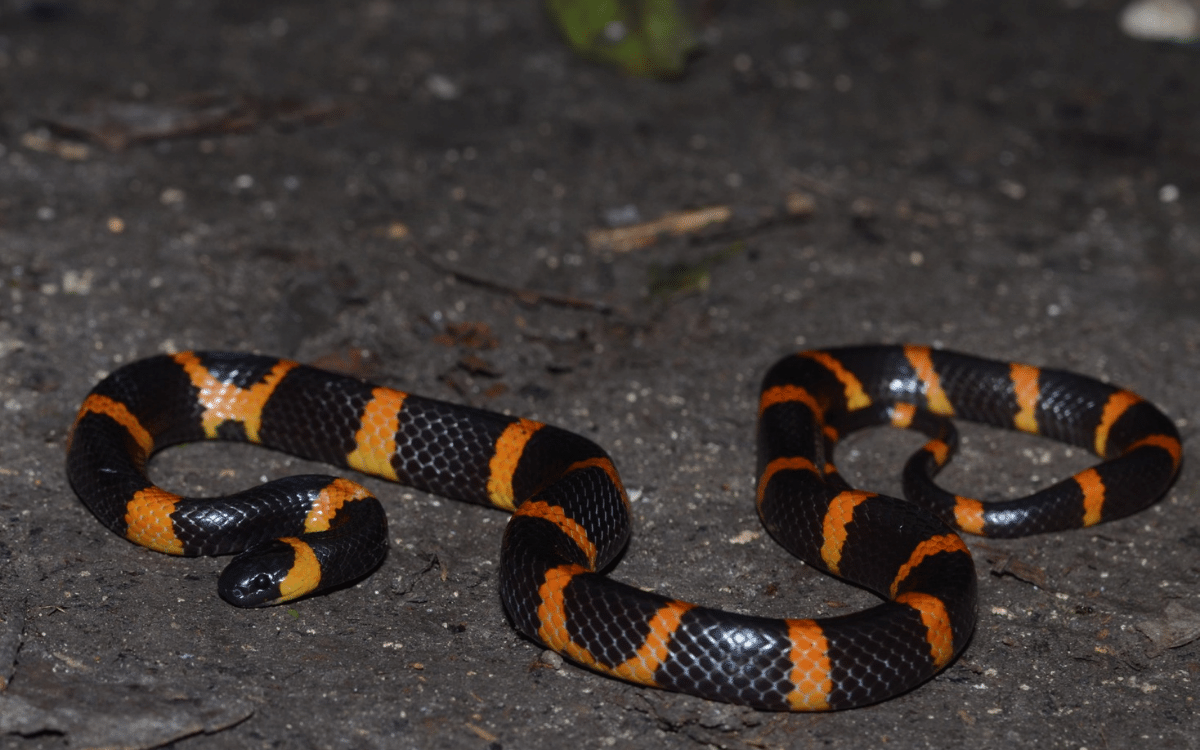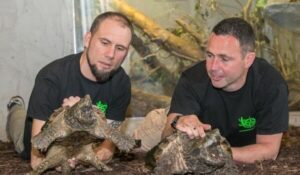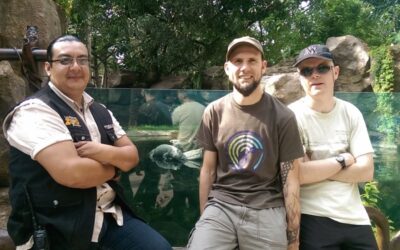Reptile and Amphibian encounters in Mayan ruins
I first visited Guatemala in 2012 and apart from the opportunity to find snakes, a big draw was the ancient Mayan civilisation – as it is for many people who visit the country.
During that first trip I spent a significant amount of time wandering through the ruins of multiple Mayan cities, many of which are still covered by forest (looking for reptiles and amphibians at the same time of course!) and marvelling at their impressively huge stone structures that pierce the forest canopy.
It was during these wanderings and wonderings that the inspiration came to me to start what would later become Indigo Expeditions.
The Mayans, and later the Aztecs, used a rich written language constructed of pictograms and it was one of those symbols that I chose for my first logo during those early years.
While its origins are still the subject of debate, the Hunab-Ku is thought to represent the Galactic centre, located in the bulge of the Milky Way, which they believed to be the source of all life.

Since that first visit to Guatemala I have spent countless hours in search of the reptiles and amphibians the live in the forests once inhabited by the ancient Mayan civilisations. While it is always a surreal experience to be looking for snakes and lizards on a mound that is in fact and ancient temple or palace, one of the most spectacular experiences for me was spending 10 days at the remote city of El Mirador.
El Mirador is situated in the far north of Guatemala close to the border with Mexico. It also happens to be the largest known Mayan city. Many of the archaeological finds that come from El Mirador are rewriting our understanding of Mayan history. During those 10 days I encountered 24 species of reptiles and amphibians.
Particular highlights included Yucatán casque-headed treefrogs, Mexican burrowing toads, common boa, and a juvenile tiger ratsnake.
It was an honour to spend my time walking in the forests and marvelling at the structures that the culture of El Mirador left behind. Some of these structures are truly astounding. La Danta, for example, is the largest pyramid by volume, and 2nd tallest, that we know of in the world. It is still mostly covered by the forest forest that has reclaimed the region and only the top of the structure emerges from the forest canopy.
The nooks and crannies in the stonework of La Danta, and other Mayan structures, are excellent hiding places for reptiles and amphibians to hide and so climbing up them (where safe and permitted) is an adventure on many levels.
If you are lucky you might even get serenaded by a troop of howler monkeys when you reach the top!
See some of my favourite reptile and amphibian encounters in Mayan ruins below!
Indigo Archives: First Published 28 October 2013
Casque-headed treefrog – Triprion petasatus

Common boa – Boa imperator

Mexican burrowing toad – Rhinophrynus dorsalis

Rainforest cat-eyed snake – Leptodeira frenata

Sheep frog – Hypopachus variolosus

Striped basilisk – Basiliscus vittatus

Terrestrial snail-eating snake -Tropidodipsas sartorii

Tiger ratsnake – Spilotes pullatus

Disclaimer:
This blog is intended solely to discuss in an anecdotal fashion some of my experiences with reptiles and amphibians in the field.
It is not intended to be used either as an identification guide, or a guide to reptile or amphibian handling.
Indigo Expeditions will not be held responsible for any harm sustained by anyone who handles reptiles and amphibians in an attempt to identify them.
Please ask a professional to help!













0 Comments